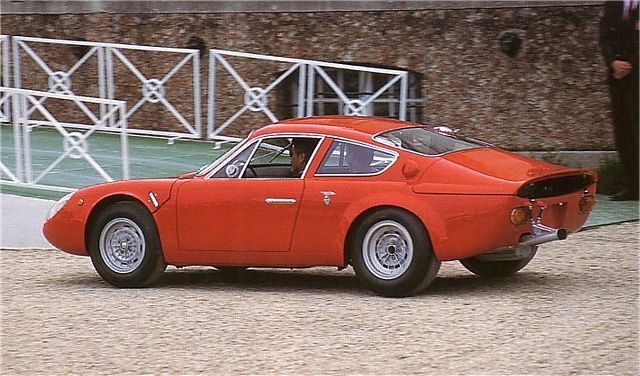The Abarth Simca 2000 GT Long-Nose stands as a testament to the golden age of European motorsport engineering. Born in 1965, this rare masterpiece combines Italian racing prowess with French manufacturing excellence. Among the countless racing machines of the 1960s, this particular model carved its own niche through innovative design and remarkable performance capabilities.
Only ten units of the Long-Nose variant ever left the factory floor, each representing a perfect fusion of aerodynamic innovation and raw power. These machines weren’t just built for speed — they were crafted to dominate the racing circuit with precision engineering and groundbreaking design solutions.
Racing Blood in Italian Veins
The heart of this racing beast pulses with pure Italian engineering. The 1946cc powerplant delivers between 125 and 177 horsepower, depending on its tune, pushing the lightweight chassis to speeds exceeding 160 mph. Every component speaks of racing heritage, from the precisely engineered dual Weber 45mm carburetors to the sophisticated dry-sump lubrication system.
The engine’s ability to sustain high revs, reaching up to 7,200 RPM, showcases the advanced metallurgy and engineering of its era. The dual-spark ignition system ensures optimal combustion, while the dry-sump setup maintains consistent oil pressure during high-G cornering.
“The Long-Nose variant represented the pinnacle of 1960s racing technology. Its engine characteristics were ahead of its time, offering reliability without compromising performance.” — Marco Rossi, Classic Racing Historian
Every aspect of the powertrain demonstrates meticulous attention to detail. The transmission, though borrowed from Simca’s parts bin, underwent extensive modification to handle the engine’s substantial power output. This combination of proven reliability and racing-grade enhancements created a powertrain package that could withstand the rigors of endurance racing.
Aerodynamic Innovation
The most striking feature of the 2000 GT Long-Nose lies in its revolutionary aerodynamic design. The extended nose section wasn’t merely an aesthetic choice — it represented a significant step forward in understanding and implementing aerodynamic principles in racing car design.
The elongated front end, combined with the slightly raked windscreen, creates a smooth airflow path over the car’s body. The rear “duck-tail” design, necessitated by the longer engine bay, inadvertently provided additional stability at high speeds.
Key aerodynamic features that set this model apart:
- streamlined nose section for reduced frontal drag;
- optimized air intake placement for engine cooling;
- integrated rear spoiler effect from the duck-tail design;
- balanced downforce distribution across both axles.
These design elements contributed to exceptional stability at high speeds, a crucial factor in endurance racing success.
Competition Legacy
The Abarth Simca 2000 GT Long-Nose quickly established itself as a formidable competitor on European racing circuits. Its combination of light weight — approximately 680 kg — and powerful engine created an impressive power-to-weight ratio that few contemporaries could match.
Historical Reference!
The partnership between Abarth and Simca had already proven successful with their World Championship victory in 1962. The Long-Nose variant of 1965 aimed to build upon this legacy with improved aerodynamics and enhanced engine performance.
“The agility of the chassis, combined with that punchy engine, made it a joy to drive at the limit. Few cars of that era could match its balance of power and handling.” — James Mitchell, Vintage Racing Driver
The racing pedigree of chassis #136-0117, completed in 1965, exemplifies the model’s competition success. This particular unit, one of the ten Long-Nose variants, participated in numerous prestigious events across Europe.
Engineering Precision
The technical sophistication of the 2000 GT Long-Nose extends beyond its aerodynamic profile. Every aspect of its construction reflects a racing-first philosophy, from the lightweight body panels to the carefully calculated suspension geometry.
The integration of the Simca 1200S “Poissy” engine architecture, enhanced with Abarth’s racing expertise, created a power unit that could deliver both performance and reliability. The dual Weber carburetor setup, coupled with the advanced ignition system, provided precise fuel delivery and combustion control.
A Legacy That Endures
The impact of the Abarth Simca 2000 GT Long-Nose reaches far beyond its brief production run. This remarkable machine demonstrated how innovative thinking and careful engineering could create a racing car that was both fast and beautiful.
Today, these rare vehicles stand as coveted collector’s items, each telling a story of automotive evolution and racing excellence. Their influence on sports car design and aerodynamic development continues to resonate in modern automotive engineering.
Pros and Cons
| Advantages | Disadvantages |
|---|---|
| Exceptional aerodynamic design with proven racing benefits | Extremely rare, with only 10 units produced |
| Advanced engine technology for its era, including dry-sump lubrication | Limited parts availability for maintenance and restoration |
| Impressive power-to-weight ratio enhancing performance | High maintenance requirements due to racing-spec components |
| Historically significant racing pedigree | Complex dual-ignition system requires specialist knowledge |
| Innovative cooling system design | Expensive to acquire and maintain |
| Excellent handling characteristics | Limited documentation available for restoration |
| Strong collector value appreciation | Original spare parts are virtually unobtainable |
The Abarth Simca 2000 GT Long-Nose represents a perfect storm of innovation, performance, and exclusivity. While its rarity and maintenance requirements present challenges, these factors only enhance its appeal among serious collectors and automotive enthusiasts. The car’s historical significance and technical achievements secure its position as one of the most remarkable racing machines of the 1960s.

